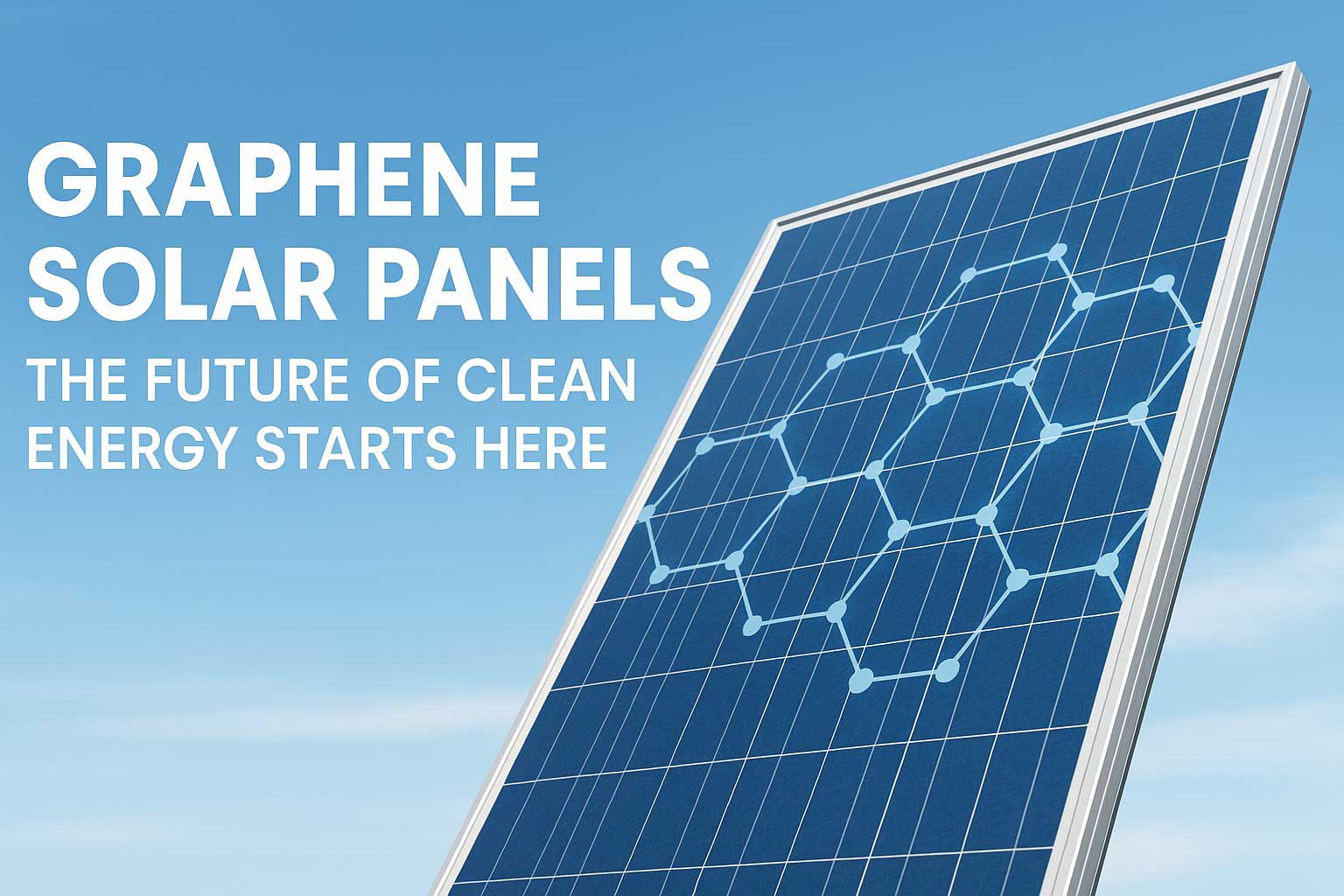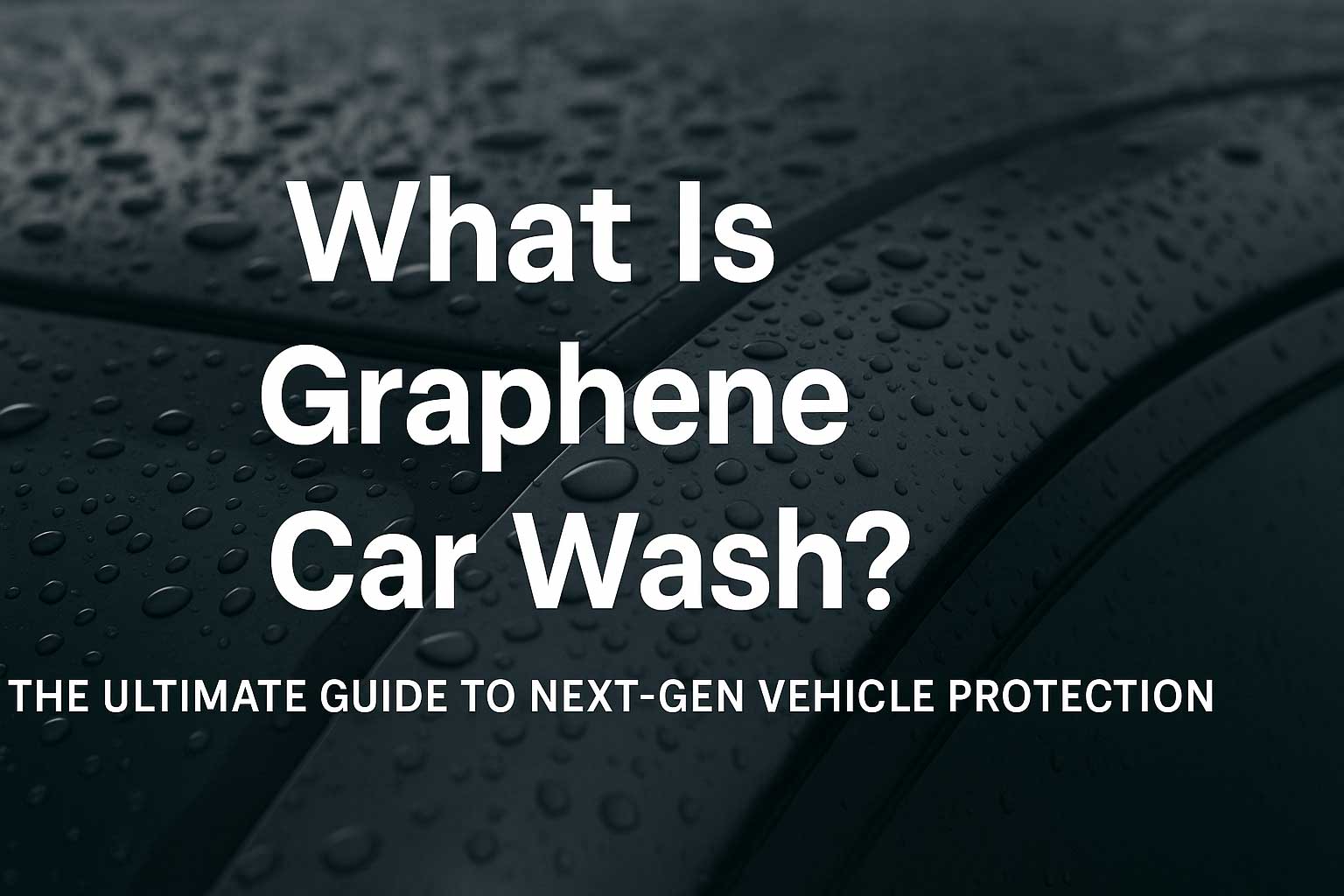Graphene Solar Panels: The Future of Clean Energy Starts Here
Discover how graphene solar panels revolutionize renewable energy with higher efficiency, flexibility, and durability. Learn the benefits and future outlook.
Introduction: Why Graphene Solar Panels Could Change Everything
Solar energy has already reshaped the global energy landscape—but what if it could get even better? What if we could generate more electricity, with less material, in smaller, lighter, and flexible panels?
Enter graphene solar panels—a game-changing innovation that combines the power of the sun with one of the most extraordinary materials on Earth.
Graphene, often hailed as a “wonder material,” is a single layer of carbon atoms arranged in a two-dimensional honeycomb lattice. It is 200 times stronger than steel, lightweight, highly conductive, and nearly transparent—making it an ideal candidate for next-generation solar technology.
But how do graphene solar panels work, and are they truly the future of photovoltaics?
Let’s dive deep into the science, benefits, challenges, and exciting future of graphene-powered solar panels.
What Are Graphene Solar Panels?
Graphene solar panels are photovoltaic (PV) devices that incorporate graphene in their construction to enhance efficiency, flexibility, and conductivity. These panels may use graphene in different layers—such as electrodes, transparent conductors, or even the active light-absorbing layer.
Unlike traditional silicon-based solar panels, graphene-based panels can:
- Work in low-light and overcast conditions
- Be made thin, flexible, and transparent
- Offer higher electron mobility, improving power conversion efficiency
- Enable next-gen designs like wearable solar or solar windows
Graphene can be used in various solar technologies, including:
- Perovskite solar cells
- Organic photovoltaic (OPV) cells
- Dye-sensitized solar cells (DSSCs)
- Silicon-based hybrid cells
Benefits of Graphene Solar Panels
1. Enhanced Efficiency
Graphene’s high electrical conductivity allows for faster electron transfer, reducing energy loss. In lab conditions, graphene has improved the performance of perovskite and organic solar cells by up to 20–30%.
✅ Reference: Nature Energy
2. Greater Durability
Graphene is chemically stable and highly resistant to UV radiation, oxidation, and moisture, which extends the lifespan of the panels.
3. Flexibility and Transparency
Thanks to its thinness (just one atom thick), graphene enables the creation of bendable, rollable, or see-through solar panels—ideal for:
- Wearable electronics
- Solar windows
- Building-integrated photovoltaics (BIPV)
4. Light Absorption Across the Spectrum
Graphene absorbs light across the entire electromagnetic spectrum—from UV to infrared—enhancing energy capture, especially in low-light or cloudy conditions.
5. Sustainability
Graphene can be derived from carbon-rich waste materials like coconut shells or food scraps, reducing the environmental footprint of panel production.
Challenges of Graphene Solar Panels
1. High Production Costs
Producing high-quality, defect-free graphene at scale is still expensive. Although methods like chemical vapor deposition (CVD) are improving, affordability remains a challenge.
2. Commercial Scalability
While graphene-enhanced cells have shown amazing results in laboratories, mass production and market availability are limited. Only a few companies are currently experimenting with commercial products.
3. Integration with Existing Tech
Blending graphene with silicon or perovskite layers requires precision engineering to avoid performance trade-offs or instability.
Real-World Applications and Breakthroughs
🔬 Scientific Advancements
- Researchers at MIT and University of Manchester have developed graphene solar cells with up to 60% theoretical efficiency in controlled environments.
- In 2018, Chinese researchers built a graphene solar cell that could generate electricity from rainwater, thanks to the ionic potential of water droplets interacting with graphene.
🏢 Emerging Startups and Companies
- Graphene Manufacturing Group (GMG) and SunDrive are exploring graphene in solar and energy storage.
- Freevolt is developing self-charging IoT devices using graphene-based energy harvesters.
How Do Graphene Solar Panels Compare?
| Feature | Traditional Panels | Graphene Solar Panels |
|---|---|---|
| Efficiency | 15–22% | Potentially up to 60% |
| Flexibility | Rigid | Highly flexible |
| Transparency | Opaque | Transparent possible |
| Low-Light Performance | Moderate | Excellent |
| Durability | High | Higher with proper coating |
| Cost (Current) | Moderate | High (but decreasing) |
Frequently Asked Questions (FAQs)
Are graphene solar panels available for consumers?
Currently, no mass-market graphene solar panels are widely available. However, prototypes and test products are being developed and tested, and we may see commercial rollouts in the next 3–5 years.
How much more efficient are graphene solar panels?
Efficiency gains vary depending on the type of solar cell. In some studies, graphene-enhanced perovskite and DSSC cells have achieved efficiency increases of 20–30% compared to non-graphene counterparts.
Can graphene panels work at night or during rain?
Amazingly, yes. Graphene’s ionic sensitivity has been used to generate small currents from raindrops, and hybrid panels combining solar and kinetic energy are being explored.
Is graphene toxic or environmentally harmful?
Graphene is made of carbon, so it is non-toxic and biodegradable in most forms. That makes it an eco-friendly alternative to heavy metals used in other PV tech.
The Future of Graphene Solar Panels
Graphene solar panels are not science fiction—they are a rapidly evolving science frontier.
With continued investment in nanomaterials, cleaner production methods, and research into hybrid systems, graphene’s role in energy generation is poised to disrupt how we think about solar power.
Experts predict that in the next decade, we’ll see:
- Graphene-integrated solar fabrics
- BIPVs in smart cities
- Solar panels with 2x the lifespan
- On-demand, printable solar sheets
As production scales up and costs come down, graphene-enhanced panels may become a key component in achieving net-zero carbon goals and making renewable energy universally accessible.
Conclusion: Is Graphene the Solar Revolution We’ve Been Waiting For?
Yes—and it’s already happening.
Graphene solar panels promise a leap in performance, versatility, and durability that traditional silicon panels can’t match. While we aren’t yet at the point where you can walk into a store and buy them, the momentum is real.
Whether you’re an investor, a tech enthusiast, or someone looking to make your home energy-efficient in the near future, keeping your eye on graphene is a smart move.
👉 Stay ahead of the curve—watch this space, or better yet, explore startups and research projects pushing this technology forward.





Leave A Comment